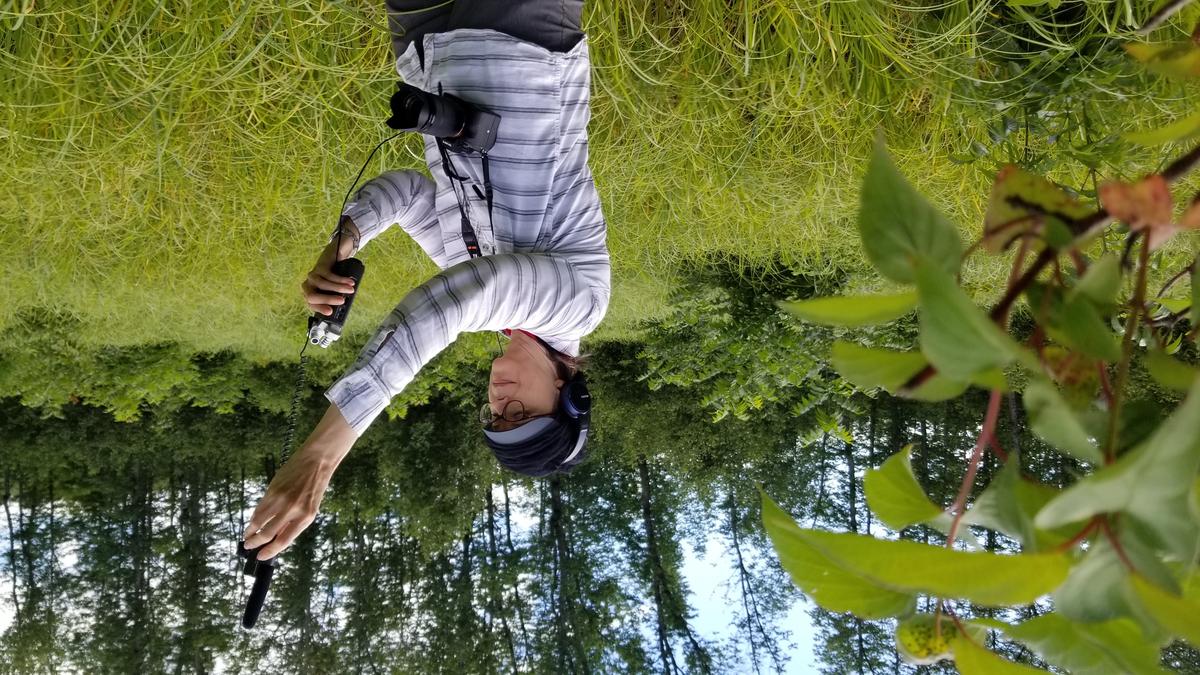
A researcher collects field data in Chippewa National Forest, 2020
Background
Nearly 8% of all the trees in Minnesota are ash species, all of which are threatened by the invasive emerald ash borer (EAB). EAB cost managers across the country an estimated $10.7 billion between 2002 and 2019 to treat, remove, and replace more than 17 million ash trees.
Current best management practices include methods like clearcutting or group selection, the selective removal of small groups of trees with or without replanting. When trees are removed, the visual experience of a forest is changed for the public—sometimes to negative reception.
This project aimed to better understand public perceptions of major EAB management approaches by allowing participants to visualize the effects to forest structure through virtual and augmented reality.
Research questions
- What is the public acceptability of select EAB management approaches in forested park areas?
- What are the impacts of additional information on management acceptability and landscape preference on whether the public would want to visit a site?
Outcomes
This team merged research on social perceptions and silvicultural strategies to help natural resource managers better communicate with the public about forest management, specifically when managing in response to emerald ash borer. Communication efforts can increase the public’s acceptance of forest management actions and affect their intent to return to a site.
Communicating through photos and text were sufficient ways to demonstrate to visitors what and why certain forest management actions are taken, especially in areas where visitors dominate. Virtual reality was a helpful tool in areas where the natural landscape dominates and when harvesting was part of management actions.
Research summary
Publications
- Opportunities and challenges in advanced communication technologies in the environment: a case of forest management communications (Applied Environmental Education & Communication, 2023)
- Research note: The impact of advanced information communication technologies on visitor acceptance of forest management in response to emerald ash borer (Journal of Outdoor Recreation and Tourism, 2023)
- What Really Works? Testing Augmented and Virtual Reality Messaging in Terrestrial Invasive Species Management Communications to Impact Visitor Preferences and Deter Visitor Displacement (Environmental Management, 2023)
Project artifacts
- Download virtual reality (VR) app (for Android phones only, to be used with virtual reality goggles)
- Instructions for accessing the VR app (Google Doc)
- Project data archive
- Visual and audio assets archive
Outreach
- CFANS Research Symposium 2023
- International Congress on Biological Invasions 2023
- Minnesota Forestry Review, 2023
- Minnesota Urban Forestry Outreach and Research, 2022
- National Outdoor Recreation Conference, 2022
- National Natural Areas Conference, 2022
- Upper Midwest Invasive Species Conference, 2022
- International Association Society and Natural Resources Conference, 2022
- Minnesota Naturalists Association Conference, 2022
- Minnesota Forestry Review, 2021
- National Park Service IEP, 2021